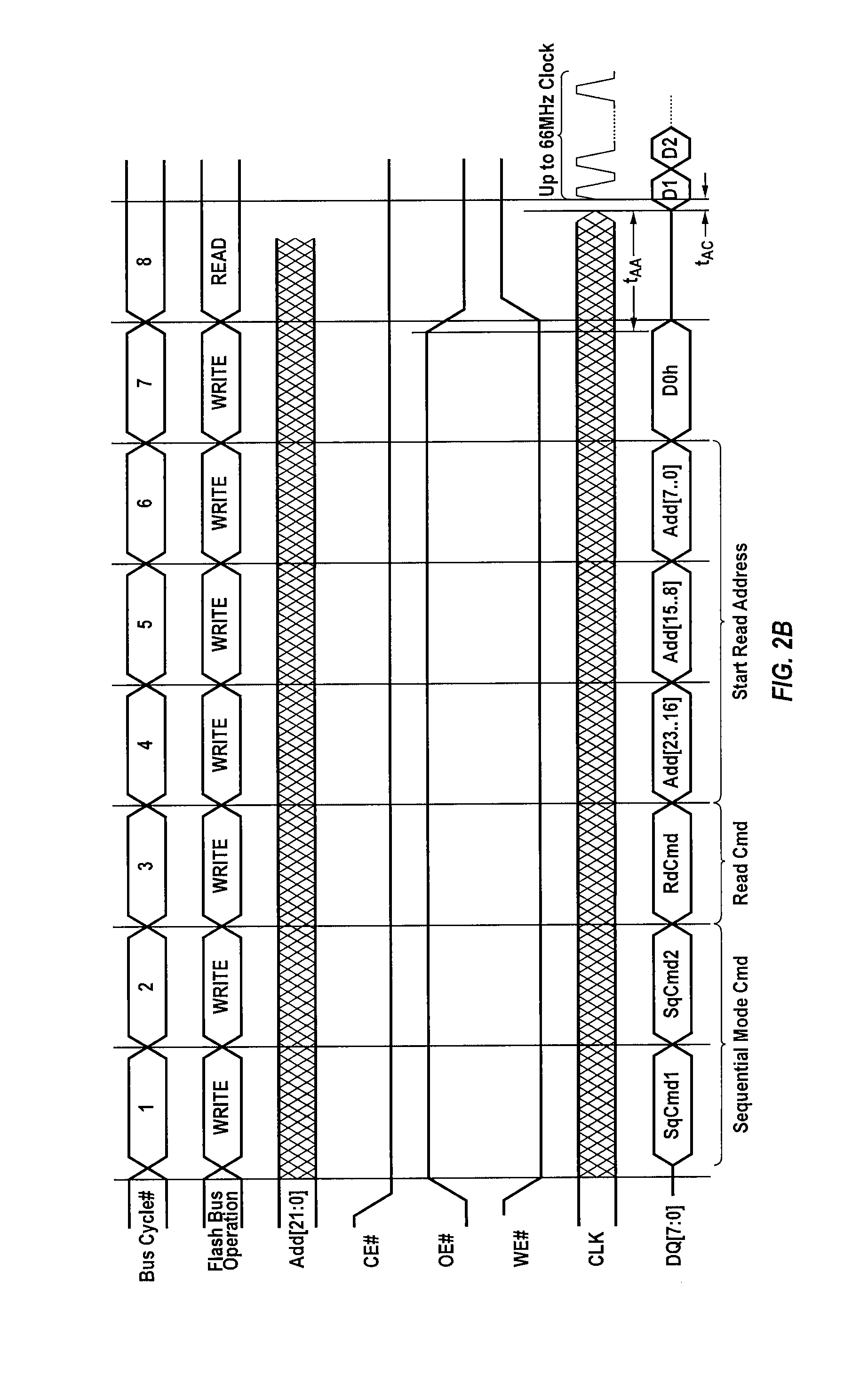Techniques for sequentially transferring data from a memory device through a parallel interface
a technology of parallel interface and data transfer, which is applied in the direction of electric digital data processing, instruments, computing, etc., can solve the problem of slow data transfer from the flash device to the fpga
- Summary
- Abstract
- Description
- Claims
- Application Information
AI Technical Summary
Benefits of technology
Problems solved by technology
Method used
Image
Examples
Embodiment Construction
[0020]The present invention provides techniques for synchronously transferring data in parallel from an external memory device to a destination circuit in a sequential read mode.
[0021]The destination circuit can be a programmable integrated circuit such as a field programmable gate array (FPGA), a programmable logic device (PLD), a programmable logic array (PLA), a configurable logic array, etc. The destination circuit can also be an application specification integrated circuit (ASIC), or an ASIC / FPGA hybrid. Although the present invention is discussed primarily in the context of an FPGA as the destination circuit, it should be understood that the destination circuit can be any suitable integrated circuit and that FPGAs are discussed herein merely as an example of the present invention.
[0022]Data is transferred to the destination circuit from an external memory device such as a FLASH or EEPROM memory device. Although the present invention is discussed primarily in the context of FLA...
PUM
 Login to View More
Login to View More Abstract
Description
Claims
Application Information
 Login to View More
Login to View More - R&D
- Intellectual Property
- Life Sciences
- Materials
- Tech Scout
- Unparalleled Data Quality
- Higher Quality Content
- 60% Fewer Hallucinations
Browse by: Latest US Patents, China's latest patents, Technical Efficacy Thesaurus, Application Domain, Technology Topic, Popular Technical Reports.
© 2025 PatSnap. All rights reserved.Legal|Privacy policy|Modern Slavery Act Transparency Statement|Sitemap|About US| Contact US: help@patsnap.com



